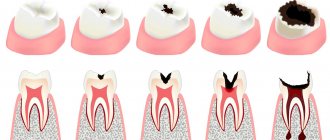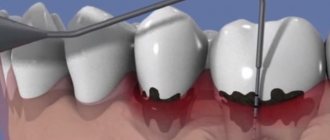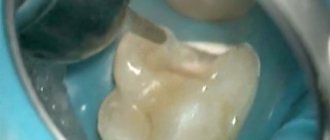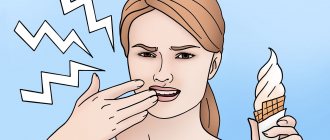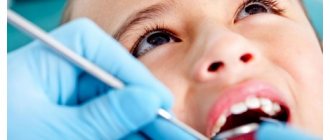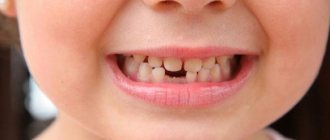Description of fungi of the genus Candida
Candida are yeast-like single-celled fungi. In the external environment, they are found in soil and water, on food products (raw meat, fruits, juices, cottage cheese, milk), and on household items. They are opportunistic microorganisms - this means that they can live on the human body for a long time without causing concern, and manifest themselves only when immunity decreases. In people without immune system disorders, the fungus is found in the mouth and nose, on the mucous membrane of the digestive tract, and in the vagina [1]. In a suppressed state, it even brings benefits, participating in the formation of the body’s immunobiological reactivity [2].
Two decades ago, Candida fungi as opportunistic pathogens in the oral cavity were found in only 5.7% of healthy individuals.
This figure has increased and today is about 50%, which can also be explained by improving diagnostic methods aimed at identifying fungi. Sakharuk N. A., Ph.D., Associate Professor of the Department of Therapeutic Dentistry of VSMU [1]
Yeast fungi are resistant to external factors and can adapt to conditions of limited nutrition and oxygen access [2].
Reasons for the development of candidiasis
Sources of infection for candidiasis are previously infected individuals. In this case, the main routes of transmission of infection to a child are:
- intrauterine;
- aerosol;
- infection during childbirth when moving through the birth canal of mothers suffering from urogenital candidiasis;
- contact.
Factors contributing to the development of the disease are:
- violation of requirements regarding hygienic care of the child’s oral tissues and teeth;
- weakened immunity or the presence of severe disturbances in the functioning of the immune system;
- allergization of the body;
- gastrointestinal diseases;
- anomalies in the structure of the tongue;
- oral acidosis;
- deficiency of vitamin C, B vitamins;
- long-term treatment using antibacterial agents;
- the presence of severe systemic diseases;
- morphological and functional immaturity of epithelial tissues in the mouth;
- undergoing a course of therapy using hormone-containing drugs.
Stages of infection development
The fungus can penetrate into the oral cavity in three ways: airborne, with food, and through contact with a contaminated surface (for example, cutlery) [2]. Microorganisms then go through the following stages:
- attachment to the surface of the mucous membrane;
- emergence of a colony;
- violation of the barrier properties of the mucous membrane;
- penetration into the underlying tissue.
This process occurs most simply with mucous membranes, the epithelium of which is not prone to keratinization—the oral cavity is covered with these [1, 2].
Why are Candida mushrooms dangerous?
The fungus contains several substances that are harmful to our body:
- endotoxins - poisons released during the breakdown of a microorganism after its death;
- aspartyl proteinases and phospholipases are enzymes that cause tissue necrosis;
- oligosaccharides in the cell wall that suppress immune reactions [1].
In addition, the fungus is capable of transforming into a thread-like form (the so-called pseudomycelium), which penetrates into the intercellular spaces and destroys tissue.
When does a fungus become pathogenic?
Candida fungi provoke disease only in the presence of factors that contribute to their increased reproduction and penetration from the surface of tissues into the deep layers. These factors can be exogenous and endogenous - that is, caused by external causes or internal problems of the body, respectively.
Exogenous factors
- Occupational hazards: working with acids, alkalis, cements, solvents. Work in confectionery and canning shops can be dangerous, where high levels of fungal spores are recorded.
- Damage to the mucous membranes of the mouth, which is caused by poorly fitting and heavily worn dentures, sharp edges of fillings, and poor oral hygiene.
- Chemical burns with resorcinol, formaldehyde, electrical burns during electrophoresis, radiation therapy in the head and neck area.
- Local inflammatory processes in the oral cavity (recurrent aphthae, lichen planus, leukoplakia).
- Irrational and too long course of antibiotics, treatment with corticosteroids, simultaneous use of drugs from these two groups.
- Smoking and alcohol abuse.
- Stressful situations.
- Unfavorable environmental conditions.
Endogenous factors
- Acquired or congenital immune deficiency.
- Metabolic disorders: protein, fat, carbohydrate, vitamin, mineral.
- Endocrine diseases: diabetes mellitus, amenorrhea, dysmenorrhea, hypothyroidism.
- Chronic diseases of the digestive tract - especially those in which the acidity of gastric juice decreases.
- Iron deficiency.
- Serious diseases: tuberculosis, blood diseases, oncology [1, 2, 3].
Risk group and causes
In order for a fungus of the genus Candida to trigger symptoms of inflammation, it is necessary to reduce the protective properties of the body. Therefore, children with reduced immunity are at risk.
- Premature newborns.
- Children with intrauterine growth retardation and congenital defects.
- Birth trauma helps to reduce defense mechanisms.
- Severe infectious diseases.
- An unbalanced, monotonous diet leads to hypovitaminosis and decreased immune status.
- Long-term antibiotic therapy and chemotherapy directly suppress the immune system.
- Metabolic disorders.
- Endocrine diseases.
- Poor hygiene of newborns. The fungus reaches the baby from the mother through dirty nipples, hands, and care items.
The listed reasons for decreased immunity are the most studied. In reality, there are many more such factors. That is why the diagnosis of oral thrush is very common in pediatric practice.
Classification of oral candidiasis
The infection can occur in several forms with different symptoms. All of them are collected in a pivot table.
| Form of candidiasis | Preferential localization | External signs | Patient's feelings | At-risk groups |
| Acute pseudomembranous (thrush) | Cheeks, palate, tongue | White grains appear on the mucous membranes, which can merge into a cheesy film. | Burning and dryness in the mouth, pain while eating. | Usually affects children, almost never occurs in adults. |
| Acute atrophic | Cheeks, tongue | The lesions are redness with a smooth, varnished surface without plaque. | Severe pain, the mucous membrane becomes extremely sensitive to any irritants. | After thrush, a course of antibiotics or corticosteroids. |
| Chronic hyperplastic | Cheeks, tongue | White spots and plaques that, without treatment, turn into rough gray films. | As a rule, the course is painless, only some patients complain of pain when eating spicy and sour foods. | Smokers, patients with tuberculosis or blood pathology. |
| Chronic atrophic | Tongue, areas under or adjacent to dentures. | Redness and swelling of the mucous membranes. In later stages, the papillae of the tongue atrophy, and its surface becomes smooth. | Dry mouth, burning, secretion of viscous viscous saliva. | Patients with gastritis or diabetes, elderly people with dentures [2]. |
Treatment and prevention
Traditional antibiotic therapy for thrush not only does not bring results, but can also intensify the manifestation of the disease.- It is necessary to diagnose and treat the underlying process that led to decreased immunity. Without this, fungi in the child’s throat will persist for a long time, regardless of the therapy performed.
- Mushrooms of the genus Candida are afraid of an alkaline environment, so lubrication and gargling with a soda solution are successfully used locally.
- Depending on the severity of the process, the pediatrician prescribes antiseptic solutions.
- In children, at the first symptoms of candidiasis, local treatment is usually sufficient. Only chronic forms, when the spread of fungi throughout the body is proven, require the use of general antifungal drugs.
The determination of treatment tactics and the choice of drugs in the treatment of thrush in children should be carried out only by a pediatrician.
Prevention of fungal infections of the throat is aimed at maintaining hygiene standards and increasing the protective properties of the body. Children should eat a balanced diet (deficiency of vitamins and protein reduces immunity), follow a daily routine, and avoid excessive physical activity and stress. When caring for a newborn, it is important to follow all hygiene rules.
When children become ill, you should not self-medicate, especially through the unjustified use of antibiotics. If long courses of antibiotics or chemotherapy are necessary, antifungal drugs are taken as prescribed by a doctor.
Prevention of candidiasis
A few simple rules can significantly reduce the risk of developing an infection:
- use of antibiotics strictly according to indications;
- regular sanitization of children's pacifiers, toys, household items;
- brushing your teeth 2 times a day with high-quality toothpaste - for example, Colgate Total 12;
- sanitation of the oral cavity: timely treatment of caries and periodontal diseases, removal of the roots of damaged teeth;
- dental assistance: rational prosthetics, correction of occlusion pathology;
- careful adherence to the rules of care for removable dentures [1].
Candidiasis can cause serious harm to the oral cavity if the pathological process is not eliminated at an early stage. If you notice any symptoms of the disease, you must consult a doctor, who will make an accurate diagnosis and prescribe effective treatment.
List of sources:
- Sakharuk N. A. Candidiasis: etiology, clinical picture, diagnosis, treatment: Monograph. Vitebsk: VSMU, 2010. // URL: https://elib.vsmu.by/bitstream/123/10746/1/Sakharuk-NA_Kandidoz%20etiologiia%20klinika%20diagnostika%20lechenie_2010.pdf (access date 12/10/2020) .
- Molokov V.D., Galchenko V.M. Oral candidiasis. Irkutsk: Irkutsk State Medical University, 2009. // URL: https://ismu.baikal.ru/src/downloads/5eb06a90_kandidoz_polosti_rta.pdf (access date 12/10/2020).
- Weisgeim L. D., Dubacheva S. M., Gavrikova L. M. Complex treatment of oral candidiasis // International Journal of Applied and Fundamental Research. 2014. No. 2. pp. 48-51. // URL: https://applied-research.ru/ru/article/view?id=4692 (accessed 12/10/2020).
Features of the treatment of candidiasis in children
The disease treatment program involves the use of antifungal agents and the adoption of measures aimed at comprehensively strengthening the body of the infected child. Until recently, nystatin was the drug of choice for this disease, but in modern dental practice more effective and harmless dental agents are used. Foods rich in carbohydrates (sweets, cookies, honey and others) must be excluded from the diet of a sick child.
There are a number of non-pharmacological methods to combat candidiasis in childhood. In particular, the following help to cope with the manifestations of this pathology:
- warm saline solution (used as a mouth rinse for children over three years old);
- lollipops with antiseptic components (prescribed for adolescents and children over 8 years old);
- solution of baking soda (used for systematic wetting of epithelial tissues of the mouth in infants and newborns).
When a disease is detected in breastfed babies, not only the babies, but also their mothers undergo treatment. This approach to therapy helps prevent re-infection of infants during feeding.



